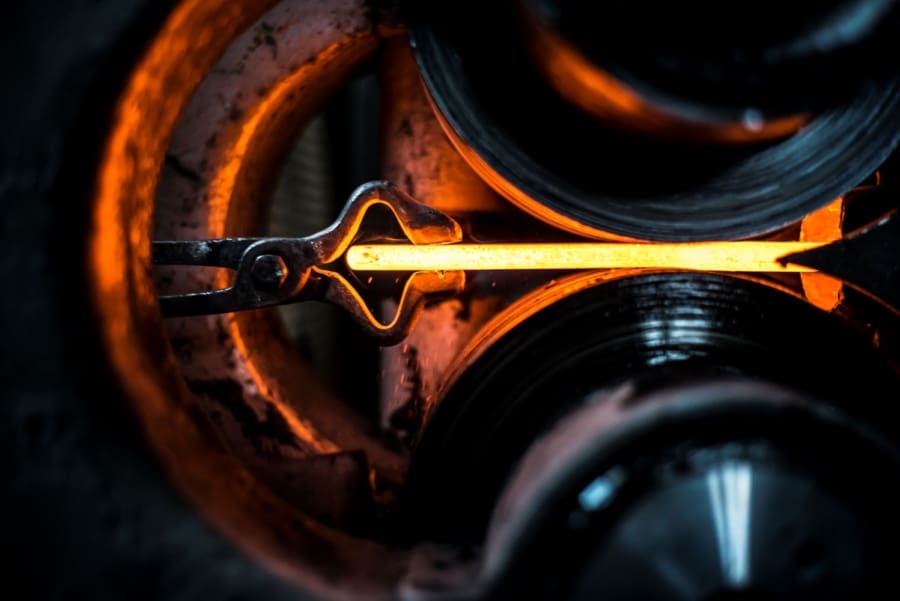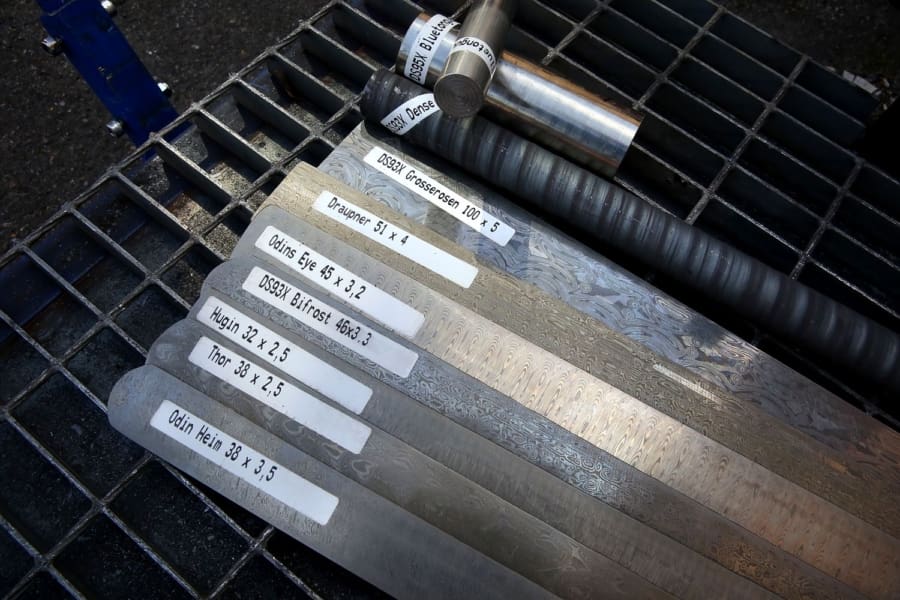Story of RWL34™
Learn more the history of one of our most popular steels, crafted in honour of Bob Loveless.
The traditional Damascus patterned steel is produced by welding two types of steel in typically seven layers. Then one forges out and folds the piece repeatedly until one gets over one hundred layers in their piece. We hold the international patent to manufacture Damascus patterned steel at Damasteel® via modern powder metallurgy, which is a method with many advantages.
A product manufactured in our steel is stainless after hardening and tempering and our powder metallurgy made steel is also cleaner and has a very small amount of inclusions and impurities in comparison to conventional casted steel. Our blacksmiths forging technique and craftsmanship guarantees a Damascus patterned steel with unique durability and strength.


Gas atomization is a process to manufacture high quality metal powders. During the gas atomization process, molten steel is atomized by inert gas jets into fine metal droplets, which cool down during their decent in the atomizing tower. Metal powders obtained by gas-atomization offer a perfectly spherical shape combined with a high level of cleanliness. After the atomization process, powders are collected in a capsule, which is sealed and then compacted by Hot Isostatic Pressing (HIP).
HIP is a process to densify gas-atomized metal powders, through the combination of high gas pressure and high temperature. The HIP process takes place in a HIP furnace where the gas pressure acts uniformly in all directions, hence providing isostatic properties and 100% densification. The semi-finished capsule is then further processed by forging and rolling into suitable dimensions for the required patterning process.
After the rolling or forging the patterns are finished off by either twisting and/or coining and will be visible after etching. Examples of twisted patterns are Dense Twist™ and Heimskringla™. Typical Damasteel® coined pattern designs includes, among others, Odins Eye™, Ladder and Rose.
